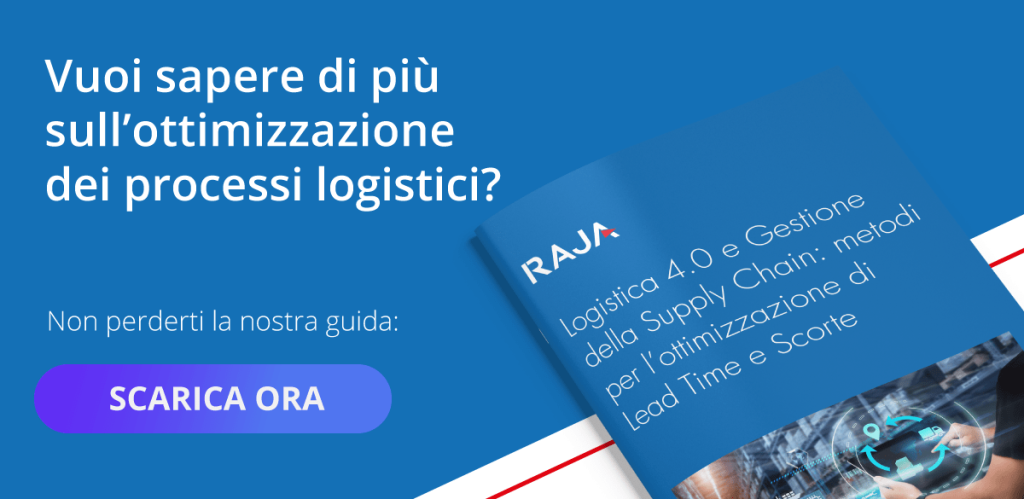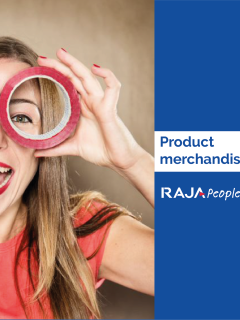Unpleasant for those who buy, even more so for those who sell. We are talking about the phenomenon of returns, which originated with physical shops but exploded with the rise of e-commerce, and which has led to the emergence of so-called reverse logistics.
For companies, this is not only a logistical but also an economic headache, requiring the definition of policies that balance costs and consumer satisfaction, while also taking into account the environmental impact of these flows. But which can represent an opportunity for customer loyalty.if not one of the keys to success in online sales, or even an element of brand building, both towards end buyers and towards stakeholders such as investors, institutions or partners.
RAJAas a provider of products and services for businesses, is committed to finding ever more innovative solutions for efficient returns management. Here are some tips.
Where reverse logistics comes from
Let’s start with the basics: reverse logistics refers to the management of reverse processes to those of distribution, which bring the product into the hands of the end buyer. It includes collection and transport of the goods, storage in company warehouses, as well as disposal, repair, repackaging or resale, as the case may be. The term return policy, on the other hand, encompasses that broader set of strategies relating not only to the ‘return to origin’ of products, but also to the definition of time modalities and possible costs for returnpackaging management (including recycling or reuse possibilities), refund or replacement standards.
According to Sendcloud’s Online Consumer Research 2021/2022, in Europe the phenomenon affects 84% of those who buy via e-commerce. Returns mainly involve products in the Fashion & Accessories category (58%), while Games & Books (43%) and Food & Beverages (47%) are less affected. There is a widespread feeling among consumers that return costs should be the responsibility of the seller (60%) and there is a lot of attention towards company policies on the subject. So much so that 52% of European potential buyers always check return policies before starting a purchase, a percentage that rises to 69% in Italy.
That of returns is therefore undoubtedly a knot to untie for all companies making online sales, whether the end customer is a consumer (b2c) or a business (b2b), as e-commerce is becoming increasingly popular in this type of transaction.
Sendcloud’s study indicates that thecustomers’ attention when it comes to returns goes first and foremost to the issue of price (i.e. seller-paid returns are preferred), but there is also a lot of importance given to elements such as the presence of a ready-made label in the purchase, the timeframe for refunds, and the extension of time for returns.
How best to manage reverse logistics
Offering free returns may, however, prove too financially burdensome for sellers. In this case, customers can be retained by using discount vouchers to be spent on the company portal for the next order with a value equivalent to the cost of the return. Another interesting lever may be theextension of the period for making returns. Longer periods are more appreciated by customers, making them more inclined to complete purchases, but also play in the seller’s favour because they make it easier for the buyer to forget about the possibility of returning the product.
There is also the possibility for companies to simplify the logistics of returns by having them collected at a single delivery point per area (post office, newsagent, etc.). An opportunity which, however, in the Italian context must be carefully evaluated, given that at the moment consumers in the Peninsula continue to prefer, more than elsewhere, the collection at home or at their place of work.
If you want to know more about optimising logistics processes, don’t miss our guide: Logistics 4.0 and Supply Chain Management: methods for optimising Lead Time and Inventory.

Reverse logistics: the IKEA approach
In short, there are many choices to be made in defining one’s own reverse logistics and the returns policy. Among those who have decided to make their reverse logistics and returns policy a distinctive feature of their offer is undoubtedly Ikea. The Swedish furniture giant, which intends to transform itself into a 100% circular by 2030, has launched a programme to allow shoppers to return batteries, furniture, light bulbs, mattresses and textiles, which are then resold in its shops or recycled. A next step will be to allow them to return used, broken or unwanted bookcases, doors or even kitchens, which Ikea will recycle into new furniture items.
RAJA solutions for better returns management
As part of reverse logistics, the focus on packaging is crucial for more sustainable returns management. Our suggestion is to carefully choose solutions such as envelopes and boxes with adhesive bands, which facilitate the customer’s returnusing the same packaging as the original shipment.
Here are the RAJA easy return solutions designed to optimise this process:
- Self-assembling one-wave carton box for shipping and return. Its closure includes a second adhesive strip that allows the products to be sent back in the event of a return;
- Bag envelopes for shipping and return. They are made of two layers of kraft paper, resistant and 100% recyclable, and are equipped with two adhesive bands for the eventual return of the product.















